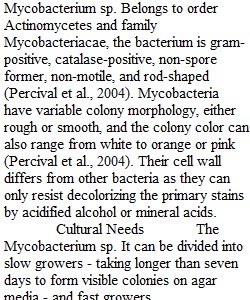


Q LECTURE Select and describe the morphology, cultural needs, identifying tests, diseases, and epidemiology of the following bacteria: NOTE: 200 Word Count Anaplasma sp. Enterobacteriaceae Pneumococcus sp. Bacillus sp. Enterococcus sp. Pseudomonas sp. Bartonella sp. Francisella tularensis Rickettsia sp. Bordetella sp. Fusobacterium nucleatum Salmonella sp. Borrelia sp. Haemophilus sp. Staphylococcus sp. Campylobacter sp. Klebsiella pneumoniae Streptococcus sp. Chlamydia sp. Legionella sp. Treponema sp. Clostridium sp. Lactobacillus sp. Vibrio sp. Corynebacterium sp. Mycobacterium sp. Yersinia sp. Coxiella burnetii Neisseria sp. Rubric Living vs Non living Living vs Non living Criteria Ratings Pts This criterion is linked to a Learning OutcomeDescription of criterion 10 pts This criterion is linked to a Learning OutcomeWord Count 5 pts Total Points: 15 PreviousNext
View Related Questions